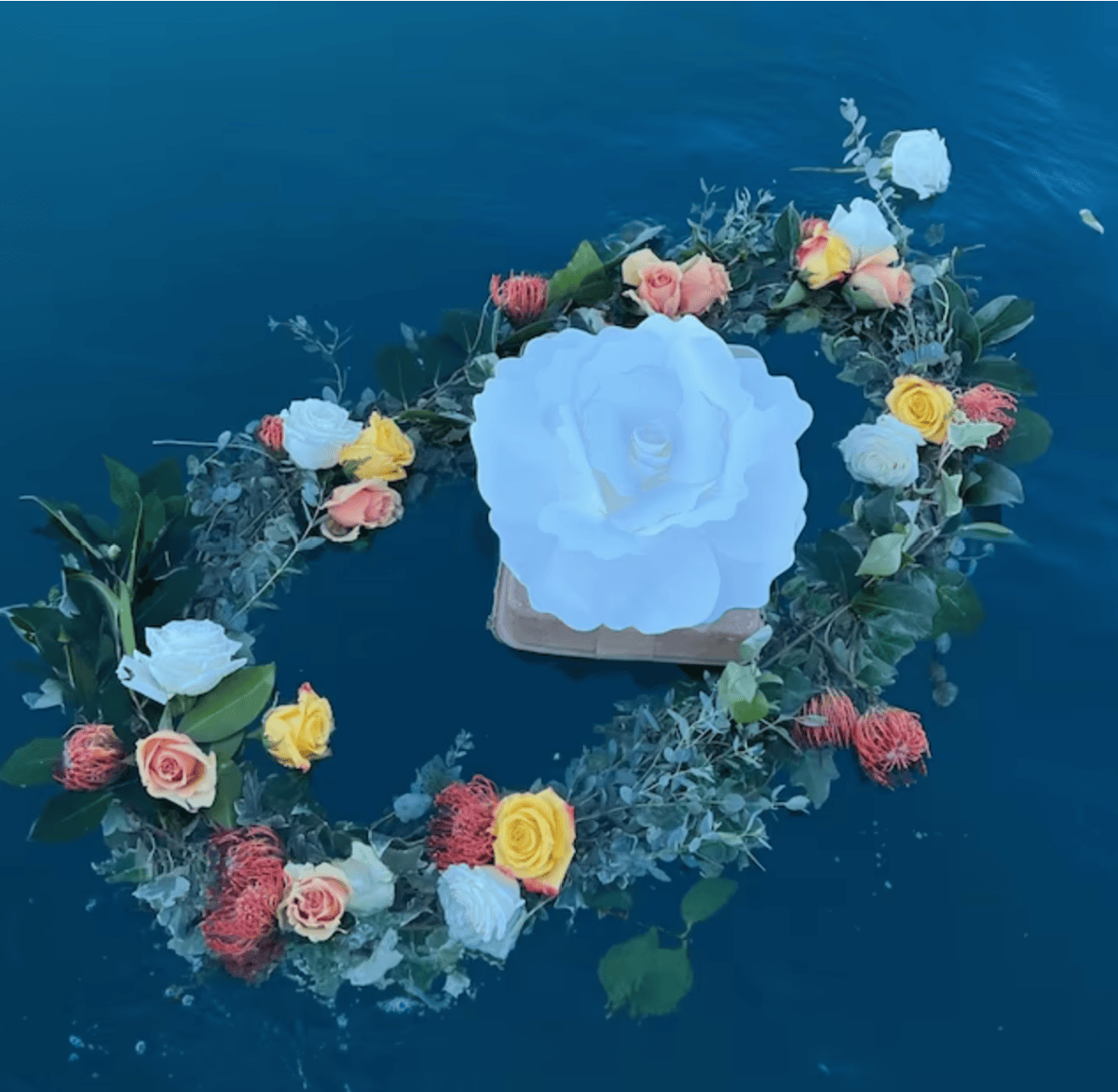How to Scatter or do Burial Ashes at Sea

Jump to a section
End of Life Planning & Resources
Subscribe to get our free End-of-Life Checklist

You can’t scatter ashes at sea within 3 nautical miles of shore.
You can’t dispose of your pet’s remains in the sea.
You must use a biodegradable material if remains are enclosed in an object.
You must request a MPRSA permit.
Remember, private property requires the explicit consent of the landowner for ash scattering.
How to request a permit from the EPA:
Apply for a permit on the EPA’s webiste: https://burialatsea.epa.gov/
EPA may issue a special permit under the Marine Protection, Research and Sanctuaries Act (MPRSA) to an applicant seeking to dispose of materials in the ocean when the proposed disposal satisfies EPA’s ocean dumping criteria. Special permits may be issued for a term not to exceed three years.
Bio Urns
Make sure that you’re not polluting the water with objects that won’t break down in the water. There are many biodegradable cremation urns available. If you have an urn that’s made of metal or ceramic, you’ll need to scatter the ashes directly into the water and take the urn back to shore with you. Spreading flowers or floating lanterns on the water can be beautiful, but make sure that there are no parts made of metal, plastic, or other similar materials. Any wreath should not contain wire fasteners, for example, which could harm fish or be left to clutter up the area. Don’t put anything in the water that could be swallowed or otherwise injure marine wildlife. Anything that you put into the water should either disintegrate relatively quickly or it needs to be removed before you leave.



Preparing for a Scattering Ashes at Sea Ceremony
Several considerations must be taken into account when planning for this type of ceremony.
Transportation: If you intend to scatter ashes at sea, securing a boat is essential to navigate at least 3 nautical miles from the shores. Seek out water burial services in your desired location to arrange transportation. Ensure that the service provider can procure a MPRSA permit and furnish the required GPS coordinates. Factor in the number of attendees when selecting a boat. Discuss any specific requirements with the charter company in advance to ensure they can accommodate your needs. Alternatively, some opt for aerial scattering from an airplane. Engage a reputable service proficient in scattering ashes, as releasing cremains during flight can be challenging due to varying wind conditions.
Weather: A prevalent concern when scattering ashes at sea is wind blowing the ashes back onto attendees. The maritime environment, including lakes, can experience strong winds with unpredictable directions. Carry a device indicating wind direction, even a simple ribbon on a stick. Take time to gauge the wind’s general direction and wait for calmer conditions if feasible. Position attendees upwind to minimize ash blowback. Ideally, release the ashes close to the water to reduce wind interference. Despite precautions, complete prevention of blowback is difficult. Monitor weather conditions for rain or storms, as high humidity may cause cremains to clump, making scattering more challenging. Rough waves and strong winds may also complicate the process.
Cremains Condition: Before embarking on the scattering, inspect the cremains in the urn. Over time, cremains can settle and clump together. Ensure they are loose enough for scattering. If clumped, gently break apart using a spoon or similar tool. Confirm the urn is easily accessible but securely sealed to prevent accidental spillage. Note that the remains may be contained within a plastic bag, requiring scissors for access.
Journey Preparation: Dress appropriately and anticipate the challenges of traveling by boat or plane. Boat decks can be slippery, necessitating suitable footwear. Given the typically colder and windier conditions at sea, layer clothing accordingly. Take seasickness medication preemptively if prone to discomfort. If children will be present, closely supervise them and implement safety measures to prevent accidents at sea.
End of Life Planning & Resources
Subscribe to get our free End-of-Life Checklist

